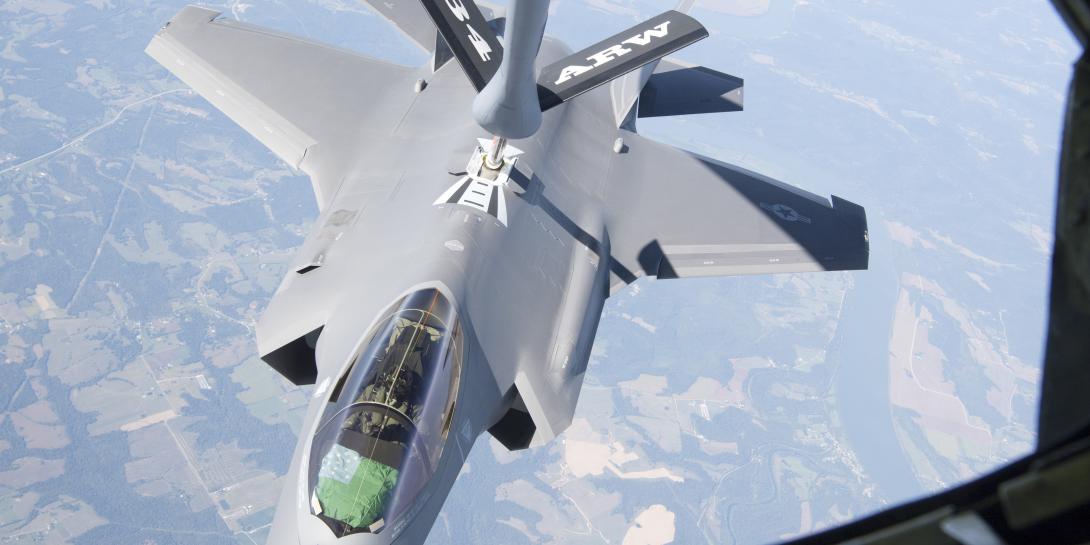Army Lab Places JADC2 Under Microscope
The U.S. Army is conducting a series of major tests on the interoperability of joint all-domain command and control (JADC2) technologies prior to the Project Convergence 2021 experiment this fall.
Army officials are leading a series of communications exercises, commonly referred to as COMMEXes, in its new Joint System Integration Laboratory (JSIL). The lab uses a realistic and scalable tactical network architecture comprised of current and future tactical radios, software applications and transport systems to provide a system-of-systems integration and testing environment for emerging communications and networking technologies, according to an Army fact sheet.
“It’s not simply just about connecting sensors to shooters but linking joint sensors to joint platforms in order to optimize effects,” Michael Monteleone, director, Space and Terrestrial Communications, Army Command, Control, Communications, Intelligence, Surveillance and Reconnaissance (C5ISR) Center, told reporters during an April 13 virtual roundtable discussion. “We have the joint services up online here already in the JSIL infrastructure passing data into and out of Army systems as well as their systems.”
Project Convergence 21, which will be held at White Sands Missile Range, New Mexico, and Yuma Proving Ground in Arizona from October 12 to November 9, will test the ability of the military services to pass data from one to the other. “We’ll have all the services contributing both their hardware that exists today and emerging technologies that each service is developing, and we’re going to converge that technology at two places in time,” said Col. Tobin “Toby” Magsig, USA, commander, U.S. Army Joint Modernization Command. “We’re taking existing data pathways that are service specific and we are developing optionality for a joint force by incorporating different options and permutations of those data streams and overlaying multiple data streams over the top of each other.”
For example, the Army has a pathway of fire missions that during last year’s Project Convergence ran through Firestorm and the Advanced Field Artillery Tactical Data System to an extended range artillery gun. “We are doing that in permutations now that include taking an Air Force F-35 or a Marine Corps G/ATR [Ground/Air Task Oriented Radar] and using those as sensors instead of typical Army sensors as a precursor for that call-for-fire mission,” Col. Magsig said.
The joint focus of the experiments also involves space-based sensing capabilities. “We are using space-based satellite sensing and routing it through different headquarters like the Multi-Domain Task Force, the Army’s newest headquarters, which will be the capstone unit from the Army’s perspective, for Project Convergence,” Col. Magsig explained. “But we’re also running that same data stream through the Marine Littoral Regiment and seeing the … multidomain [command and control] that the Marines are developing and the different ways that they handle data,” the colonel said, adding that all of the services are working together to learn from each other about the systems and the technologies they’re developing.
April 15 marks the end of the second COMMEX, which began April 5. Throughout COMMEX 1, officials verified message exchanges between various network components and configured and integrated more than 25 classified and unclassified communications systems into the lab’s test network. For COMMEX 2, the service connected 57 integrated systems from disparate labs and conducted an end-to-end mission thread in the joint environment.
Each COMMEX will grow increasingly complex as they progress, Col. Magsig told reporters during the roundtable. If the first was the “crawl” stage, the second is the “walk” stage, he added. The third exercise will move out of the lab and into the desert. It will include technologies for tactical air-to-ground mesh networking as well as secret and top-secret networking. For COMMEX 4, officials will pass data through those networks in preparation for Project Convergence 21.
“Some examples of systems that we’ve connected and improved interoperability on would be Firestorm,” Col. Magsig said, referring to a cutting-edge artificial intelligence system that became the star of last year’s Project Convergence. It combines situational awareness data on both enemy and friendly forces with early warning and targeting capabilities. “We’ve worked since Project Convergence 20 to pull Firestorm from the secure but unclassified network and put that up on the secret network and integrate that into the suite of mission command systems across the Army. We’re looking forward to experimenting with that and putting that into practice with Project Convergence 21.”
The Army’s Rainmaker data fabric also is included in the exercises. The Army is offering Rainmaker as a potential solution for the Defense Department’s federated data fabric, Monteleone reported. “We have that integrated here in the laboratory, and as it ingests data and provides data to other systems, we’re learning a tremendous amount from that perspective as well.”
The Army will continue searching for advanced data fabric solutions during a technology exchange meeting with industry to be held in June. Other sought-after capabilities include improvements for satellite communications for speeding up network transport, and maturation of the service’s modular open suite of standards known as CMOSS, a name representing a complicated combination of acronyms.
The experiments include technologies at various levels of readiness, the Army officials indicated. “For some of these technologies that are coming out of the lab and connecting to a tactical network for the first time, the dependencies become a very big issue across the network. So, doing these COMMEXes helps us to understand where a specific capability is at as far as its readiness to be integrated,” said Lt. Col. Stephen Kirchhoff, USA, Network Cross-Functional Team. “Doing those early, we can adjust and if we have to move where they fit into the architecture prior to execution, we can do that to help ensure our chances of success with the right mix of technologies out there on the ground during Project Convergence execution.”





Comments